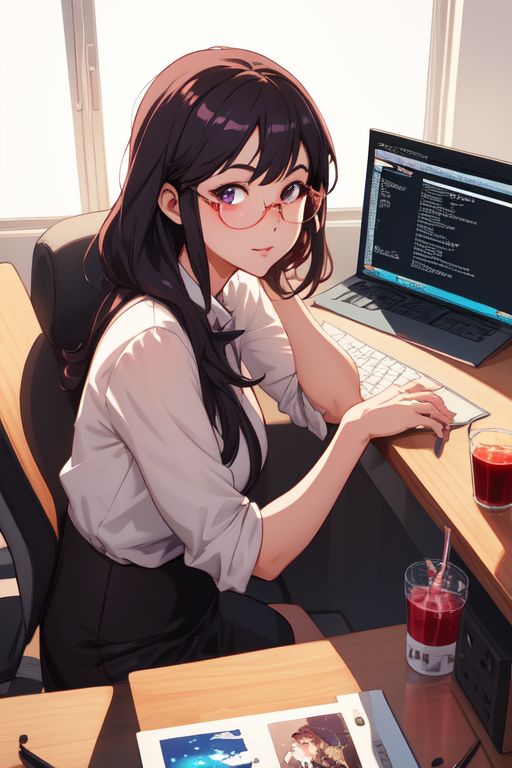User Ideas / Prospects
Executive Summary:
The Indian engineering job market in 2025 is characterized by significant dynamism, primarily fueled by rapid technological advancements and sustained economic growth. This report provides a comparative analysis of the job market trends for five mainstream engineering branches in India: Civil Engineering, Electrical Engineering, Computer Engineering, Chemical Engineering, and Mechanical Engineering. The purpose of this analysis is to offer strategic insights for professionals navigating this evolving landscape. Key findings indicate that Computer Engineering currently exhibits the strongest growth and demand, largely due to the ongoing digital transformation across industries. Mechanical Engineering also presents substantial opportunities owing to its foundational role in a wide array of sectors. While Civil, Electrical, and Chemical Engineering demonstrate steady growth and demand within their respective domains, the impact of emerging technologies is a critical factor influencing the trajectory of all five branches. The strongest trends are observed in Computer Engineering, driven by the digital revolution, and in Mechanical Engineering, supported by its adaptability across diverse sectors. These trends are primarily attributed to rapid technological advancements in areas like Artificial Intelligence (AI), Machine Learning (ML), and automation, coupled with government initiatives such as Make in India and Skill India, and consistent industrial expansion.
Introduction:
The Indian economy is currently experiencing a phase of rapid expansion, with an increasing emphasis on technological advancement and infrastructure development, which has a direct and significant impact on the engineering sector. Engineering serves as a fundamental pillar of India's progress, driving innovation, the expansion of essential infrastructure, and overall technological progress. This report will focus on five mainstream engineering branches that are crucial to this development: Civil Engineering, which deals with infrastructure and construction; Electrical Engineering, concerned with power and electronics; Computer Engineering, specializing in software and information technology; Chemical Engineering, focused on processes and materials; and Mechanical Engineering, which encompasses design and manufacturing. The primary objective of this report is to provide a comprehensive and data-driven comparative analysis of the job market trends for these five engineering branches within India for the year 2025 and the near future. This analysis aims to equip professionals with the necessary insights to make informed decisions regarding their career paths. The report will cover key aspects for each branch, including the current level of demand, the projected growth rate, the primary industries that are actively hiring, the influence of emerging technologies, the specific skills and specializations that are in high demand, and the typical salary ranges for professionals at different stages of their careers. The information presented in this analysis is derived from a variety of recent industry reports, surveys conducted by job portals and educational institutions, and relevant government statistics
Comparative Analysis of Job Market Trends:
- Demand:
Currently, Computer Engineering and Mechanical Engineering exhibit the highest demand in India in 2025. The demand for Computer Engineering is significantly boosted by the thriving IT sector and the ongoing digital transformation across various industries, with over 82,000 job openings reported 14. Mechanical Engineering also experiences strong demand due to its fundamental role in a wide array of industries, particularly manufacturing, automotive, and aerospace 23. Civil Engineering demonstrates robust demand driven by extensive infrastructure projects 2, while Electrical and Chemical Engineering maintain steady demand across their respective sectors 6. The sheer volume of job openings in Computer Engineering suggests a quantitatively higher current demand compared to the more general descriptions of demand in other engineering fields.
- Projected Growth Rate:
Computer Engineering is projected to have the most significant growth rate in the near future, with an anticipated 22% increase in tech jobs 11and a 21.4% CAGR in the engineering software market 13. Civil Engineering also shows strong growth projections, with a CAGR of 7.8% for the market 1and an annual demand growth of 9% for professionals 2, with some estimates going as high as 25% annually 3. Electrical Engineering is expected to grow at around 5% annually in terms of employment 8, with a notable 12% projected annual growth in the electrical equipment manufacturing market 6. Mechanical Engineering's growth is projected to be in the range of 4-7% 24, while Chemical Engineering is expected to see an approximate annual growth of 8% in demand 19. The consistently higher growth rate projected for Computer Engineering indicates that it will likely continue to generate more new job opportunities compared to the other branches in the coming years.
Key Industries:The primary industries actively hiring professionals vary across the engineering branches. Computer Engineering is heavily concentrated in the IT services sector, software development companies, and the e-commerce industry. Mechanical Engineering has the broadest distribution, with significant hiring in manufacturing, automotive, aerospace, and the energy sector. Civil Engineering is primarily focused on infrastructure and construction projects, with substantial involvement from the government sector. Electrical Engineering sees major hiring in power generation, telecommunications, and the automation industry. Chemical Engineering is vital for the chemical manufacturing and processing industries, including pharmaceuticals and the energy sector. The concentration of Computer Engineering in the rapidly expanding technology sector contrasts with the wider distribution of the other branches, suggesting different sensitivities to sector-specific economic fluctuations.
- Engineering Branch and Their Key Hiring Industries
Civil:-
Civil Services, Private Construction Firms, Indian Armed Forces, Public Sector Undertakings (PSUs), Infrastructure Development Companies
Electrical:-
Power Generation, Telecommunications, Automation & Robotics, Semiconductors, Renewable Energy, Electrical Equipment Manufacturing, Electronics Manufacturing
Computer:-
IT Services, Software Development, E-commerce, Artificial Intelligence and Machine Learning Companies, Product Development Companies, Cybersecurity Firms
Chemical:-
Oil & Gas, Chemical Manufacturing, Pharmaceuticals, Food Processing, Biotechnology, Petroleum, Fertilizer, Power and Energy, Water Treatment, FMCG, Air Conditioning and Refrigeration
Mechanical:-
Manufacturing, Automotive, Aerospace, Energy, Construction, Healthcare, Electronics, Pharmaceuticals, Heavy Machinery, Power Generation, Chemical Processing, Food and Beverage, Metals, Industrial Equipment, Machinery Manufacturing, Automation Systems, Consulting, Project Management
- Required Skills: While core engineering principles remain fundamental, all five branches increasingly demand digital literacy and skills related to emerging technologies. Computer Engineering professionals are expected to possess strong programming skills, expertise in cloud computing platforms, and knowledge of AI and ML tools. Mechanical Engineering requires proficiency in CAD software, understanding of automation and robotics, and knowledge of sustainable design principles. Civil Engineering professionals need skills in BIM software, knowledge of smart infrastructure technologies, and an understanding of sustainable construction practices. Electrical Engineering demands expertise in renewable energy systems, smart grid technologies, and embedded systems design. Chemical Engineering is focusing on skills related to process optimization, sustainable chemical processes, and biotechnology applications. This common need for digital skills across all engineering disciplines highlights a fundamental shift in the profession, where traditional domain expertise must be complemented by technological proficiency.
- Salary Expectations: In terms of salary expectations, Computer Engineering generally offers the highest compensation, particularly at the entry and mid-levels, owing to the intense demand within the rapidly expanding IT sector. Entry-level salaries in Computer Engineering can reach up to 11.8 LPA 11, and mid-level professionals often earn in excess of 10 LPA 14. Mechanical and Chemical Engineering also provide competitive salary packages, especially for mid-level and experienced professionals, with potential earnings reaching up to 12 LPA and 20+ LPA, respectively 21. Civil and Electrical Engineering offer good salary prospects as well, with entry-level positions ranging from 3-6 LPA and 4-6 LPA, respectively 8, and opportunities for higher earnings with specialization and increased experience. The salary premium observed in Computer Engineering reflects the intense competition for skilled talent within the rapidly growing technology industry in India.
- Typical Salary Ranges (LPA) by Engineering Branch and Experience Level
Civil:-
Entry Level ( 0-3 Years of Enperience):- 3.6 - 5.0
Mid Level( 3-7 Years of Enperience):- 5.0 - 7.5
Highly Experience Level ( 7+ Years of Experience):- 7.5 - 15 +
Electrical:-
Entry Level ( 0-3 Years of Enperience):- 3.0 - 4.5
Mid Level( 3-7 Years of Enperience):- 4.5 - 9.0
Highly Experience Level ( 7+ Years of Experience):-8.0 - 12+
Computer:-
Entry Level ( 0-3 Years of Enperience):- 6.0 - 11.8
Mid Level( 3-7 Years of Enperience):- 8.0 - 15.0
Highly Experience Level ( 7+ Years of Experience):-12.0 - 25+
Chemical:-
Entry Level ( 0-3 Years of Enperience):- 3.0 - 8.0
Mid Level( 3-7 Years of Enperience):- 5.0 - 10.0
Highly Experience Level ( 7+ Years of Experience):- 8.0 - 20+
Mechanical:-
Entry Level ( 0-3 Years of Enperience):- 3.0 - 6.0
Mid Level( 3-7 Years of Enperience):- 6.0 - 12.0
Highly Experience Level ( 7+ Years of Experience):- 12.0 - 20+
how life would be impacted without engineers from various specialized fields
- Infrastructure: Civil engineers design, build, and maintain essential infrastructure like roads, bridges, dams, and buildings. Without them, our transportation networks would be rudimentary, buildings less safe, and urban planning chaotic.
- Water Resources: Civil engineers also handle water supply and sanitation systems. Without them, clean water would be scarce, and sanitation could be a major public health crisis.
- Urban Development: City planning and the development of sustainable communities would be hindered, leading to overcrowded and poorly organized living spaces.
- Machinery and Automation: Mechanical engineers design and develop machines used in industries, transport, and everyday life. Without them, there would be no cars, trains, or airplanes, and industrial processes would be inefficient and labor-intensive.
- Energy Systems: Mechanical engineers also work on power generation systems like turbines and engines. Without them, our ability to generate and efficiently use energy would be severely limited.
- Consumer Products: From home appliances to fitness equipment, many everyday items would be unavailable or far less effective.
- Power Generation and Distribution: Electrical engineers design and maintain the systems that generate and distribute electricity. Without them, we’d lack reliable power, leading to a return to pre-electricity lifestyles.
- Communication Systems: Electronics engineers develop the technology behind phones, computers, and the internet. Without their work, global communication would be nearly impossible.
- Automation and Control Systems: Modern factories and homes rely on automation for efficiency. Without these engineers, production and daily life would be far less efficient.
- Computing Devices: Computer engineers are behind the development of hardware and software that powers computers, smartphones, and other digital devices. Without them, we’d be without modern computing, crippling almost every industry.
- Networking and Internet: They also design the systems that make the internet possible. Without these, global connectivity and access to information would be severely restricted.
- Artificial Intelligence and Robotics: Advancements in AI and robotics, which are revolutionizing industries, wouldn’t exist without computer engineers.
- Pharmaceuticals: Chemical engineers are crucial in the production of medicines. Without them, the development and mass production of life-saving drugs would be impossible.
- Petroleum and Energy: They also work in refining petroleum and developing alternative energy sources. Without them, fuel would be less accessible, and energy innovation would stagnate.
- Food Processing: The food we eat often requires processing to be safe and palatable. Chemical engineers ensure that food products are safe, nutritious, and efficiently produced.
- Aviation: Aerospace engineers design and develop aircraft. Without them, air travel wouldn’t exist, drastically limiting global mobility.
- Space Exploration: They are also responsible for spacecraft and satellite technology. Without aerospace engineers, humanity’s exploration of space and our understanding of the universe would be non-existent.
- Defense: Many defense systems, including missiles and surveillance drones, rely on aerospace engineering. Without this expertise, national security could be compromised.
- Medical Devices: Biomedical engineers design and develop medical devices like pacemakers, MRI machines, and prosthetics. Without them, diagnosing and treating many conditions would be much harder or impossible.
- Tissue Engineering: Advances in tissue engineering and regenerative medicine are spearheaded by biomedical engineers. Without them, treatments that restore or replace damaged tissues wouldn’t be available.
- Healthcare Innovation: The continuous improvement of healthcare technologies, leading to better patient outcomes, depends heavily on biomedical engineers.
- Pollution Control: Environmental engineers develop systems to reduce pollution and manage waste. Without them, air, water, and soil contamination would be far worse, endangering human health and ecosystems.
- Sustainable Development: They also work on projects that aim to balance development with environmental protection. Without their expertise, sustainability efforts would falter, leading to resource depletion and ecological crises.
- Renewable Energy: Environmental engineers are key in developing and implementing renewable energy solutions, crucial for combating climate change. Without them, the transition away from fossil fuels would be significantly slower.
- Manufacturing Efficiency: Industrial engineers optimize production processes, ensuring that goods are made efficiently and cost-effectively. Without them, manufacturing would be slower, more expensive, and less reliable.
- Supply Chain Management: They also manage supply chains, ensuring that products are delivered on time and at the right cost. Without industrial engineers, logistics would be chaotic, leading to shortages and inefficiencies.
- Quality Control: Ensuring that products meet quality standards is another key role. Without industrial engineers, product defects would be more common, affecting safety and customer satisfaction.
- Advanced Materials: Materials engineers develop new materials with specific properties for various applications. Without them, innovations in electronics, construction, and healthcare (like biodegradable implants) would be impossible.
- Metallurgy: They also work on the extraction and processing of metals. Without them, we would lack the materials needed for building infrastructure, manufacturing tools, and producing electronics.
- Nanotechnology: Advancements in nanotechnology, leading to innovations in fields like medicine, electronics, and energy, are driven by materials engineers. Without them, many cutting-edge technologies would not exist.
- Farm Equipment: Agricultural engineers design and develop machinery used in farming. Without them, modern farming methods wouldn’t be possible, leading to less food production and higher food prices.
- Irrigation and Water Management: They also design systems for efficient water use in agriculture. Without these systems, crop yields would be lower, and water resources could be wasted.
- Sustainable Farming Practices: Agricultural engineers are involved in developing sustainable farming practices to ensure food security. Without them, agriculture would struggle to meet the demands of a growing population.
- Shipbuilding: Marine engineers design and maintain ships and submarines. Without them, maritime trade and naval defense would be greatly diminished.
- Offshore Engineering: They also work on offshore structures like oil rigs and wind farms. Without marine engineers, exploiting marine resources and developing offshore energy would be nearly impossible.
- Oceanographic Technology: Marine engineers contribute to technologies that explore and monitor the ocean. Without their work, our understanding and stewardship of marine environments would be limited.
- Soil and Rock Mechanics: Geotechnicalengineers study the behavior of earth materials. Without them, constructing stable foundations for buildings, bridges, and tunnels would be much riskier.
- Landslide and Earthquake Mitigation: They also develop solutions to mitigate landslides and earthquake impacts. Without geotechnical engineers, many areas would be unsafe for habitation.
- Mining Engineering: Extraction of minerals and resources from the earth is guided by geotechnical principles. Without these engineers, mining would be far less efficient and more dangerous.
Without engineers from these specialized faculties, the world would lack the technological advancements, infrastructure, and innovations that make modern life possible. Society would struggle with basic needs like shelter, transportation, healthcare, and communication, resulting in a world that is less safe, less connected, and less prosperous.
Indian engineers, particularly those involved in manufacturing, construction, and industrial activities, must be aware of several laws and regulations . These laws ensure safety, environmental protection, and compliance with ethical standards. Below are some of the key laws that Indian engineers should be familiar with:
0. The Factories Act, 1948
This is a key piece of legislation in India designed to regulate labor conditions in factories and ensure the safety, health, and welfare of workers. It applies to factories employing 10 or more workers where power is used, or 20 or more workers where no power is used. The Act sets out provisions for working conditions, working hours, safety measures, and employee welfare, aiming to protect workers from industrial hazards, including exposure to carcinogenic materials and other health risks.
Key Provisions of the Factories Act, 1948: 1. Health Provisions:- Cleanliness: Factories must maintain cleanliness, including the disposal of waste and effluents.
- Ventilation and Temperature Control: Adequate ventilation and temperature control measures must be provided to ensure worker comfort and safety.
- Dust and Fumes Control: Factories are required to control harmful dust, fumes, and other emissions to prevent health risks to workers.
- Fencing of Machinery: All dangerous machinery must be fenced off to prevent accidental injuries.
- Precautions against Dangerous Substances: Special provisions are in place to safeguard workers from exposure to dangerous substances like chemicals and carcinogenic materials.
- Worker Training: Workers should be informed and trained about the risks involved in handling hazardous materials.
- Washing Facilities: Adequate facilities for washing must be provided for workers exposed to dangerous substances.
- First Aid: Every factory must have a first-aid facility with trained personnel.
- Canteens, Restrooms, and Crèches: Factories above a certain size must provide these welfare facilities for the employees.
- Working Hours: The Act prescribes a maximum of 48 hours per week, with daily shifts not exceeding 9 hours.
- Overtime: Workers are entitled to overtime wages if they work beyond the prescribed hours.
- Annual Leave: Workers are entitled to paid annual leave depending on their length of service.
- The Act emphasizes the protection of workers from hazardous processes. It includes provisions for safety equipment, medical supervision, and inspections to minimize exposure to harmful materials like asbestos, lead, and silica dust.
- Safety Officers: Factories employing over a certain number of workers must appoint safety officers to ensure compliance with safety regulations.
- Industries that involve hazardous processes, such as chemicals or those that generate carcinogenic materials, are subject to additional regulations under Section 41A to 41H of the Act.
- Medical Surveillance: Workers in hazardous industries must undergo periodic health checks to detect any signs of occupational diseases early.
- Child Labor: The Act prohibits the employment of children below the age of 14 in factories.
- Employment of Women: There are specific provisions for regulating the working hours of women and ensuring their safety.
- Purpose: This act provides a framework for the protection and improvement of the environment, and it regulates industrial activities that may harm the environment.
- Key Provisions:
- Regulates emissions and discharges of pollutants into the environment.
- Ensures environmental impact assessments (EIA) for projects that may cause ecological damage.
- Provides power to the government to shut down factories or impose fines for non-compliance with environmental standards.
- Relevance for Engineers: Engineers must design and operate projects in accordance with environmental standards and may need to obtain environmental clearances before starting major infrastructure or industrial projects.
- Purpose: This law focuses on controlling and reducing air pollution by regulating emissions from industrial and vehicular sources.
- Key Provisions:
- Mandates that industries obtain air pollution control consent from the State Pollution Control Boards (SPCBs).
- Prohibits the discharge of pollutants beyond prescribed limits.
- Requires pollution control equipment to be installed in factories emitting hazardous gases.
- Relevance for Engineers: Engineers, especially those in manufacturing and energy sectors, must ensure that their projects adhere to air quality norms and install emission control systems where necessary.
- Purpose: This act aims to prevent and control water pollution by regulating the discharge of industrial effluents into water bodies.
- Key Provisions:
- Industries are required to obtain permission from the SPCB before discharging effluents into water sources.
- Prohibits the disposal of toxic industrial waste into rivers and lakes without proper treatment.
- Provides penalties for non-compliance and pollution violations.
- Relevance for Engineers: Engineers involved in industries like chemicals, textiles, and food processing must ensure that their wastewater is treated to meet legal standards before disposal.
- Purpose: This act regulates the design, operation, and maintenance of boilers in industrial establishments to ensure their safe usage.
- Key Provisions:
- Engineers must get boilers inspected by certified inspectors before they can be used in factories.
- Ensures compliance with safety standards for the operation of boilers and penalties for unsafe practices.
- Relevance for Engineers: Mechanical and industrial engineers working with boilers need to be familiar with inspection, certification, and operational safety requirements.
- Purpose: The act promotes efficient use of energy and mandates energy-saving measures in industries.
- Key Provisions:
- Establishes the Bureau of Energy Efficiency (BEE) to enforce energy standards.
- Mandates energy audits for industries consuming large amounts of energy and encourages the adoption of energy-efficient technologies.
- Relevance for Engineers: Engineers working on energy projects or in energy-intensive industries must adopt energy-efficient practices and comply with energy conservation guidelines.
- Purpose: Provides for mandatory public liability insurance for industries that deal with hazardous substances, ensuring compensation for victims of accidents caused by industrial operations.
- Key Provisions:
- Requires industries to take out insurance policies covering potential harm caused by accidents involving hazardous substances.
- Ensures immediate relief to individuals affected by industrial accidents.
- Relevance for Engineers: Engineers working in industries involving hazardous chemicals or processes should be aware of liability concerns and ensure proper safety measures and insurance coverage.
- Purpose: Regulates the working conditions of laborers employed in construction projects and provides for their safety, health, and welfare.
- Key Provisions:
- Requires construction employers to register their projects with state governments.
- Ensures the safety of workers by providing provisions for protective gear, medical care, and sanitation facilities.
- Mandates welfare measures such as crèches, canteens, and first-aid facilities at construction sites.
- Relevance for Engineers: Civil and construction engineers need to ensure that their projects comply with this act to protect workers and ensure legal compliance.
- Purpose: Governs the generation, transmission, distribution, and use of electricity in India, ensuring the safety and reliability of electrical installations and networks.
- Key Provisions:
- Engineers must ensure that electrical installations conform to safety standards.
- The act also regulates power trading, renewable energy sources, and electricity tariffs.
- Relevance for Engineers: Electrical engineers need to design, implement, and manage power systems according to the safety and operational standards outlined in the act.
- Purpose: This regulation governs the generation, handling, storage, and disposal of hazardous waste, including carcinogenic substances.
- Key Provisions:
- Mandates proper waste management systems for industries generating hazardous waste.
- Ensures that industries follow strict procedures for the transportation and disposal of hazardous materials.
- Regulates the transboundary movement of hazardous waste.
- Relevance for Engineers: Engineers in sectors like chemicals, pharmaceuticals, and manufacturing must ensure the safe handling, storage, and disposal of hazardous waste, avoiding environmental contamination.
- Purpose: Regulates the working conditions, safety, and welfare of workers in mines.
- Key Provisions:
- Provides safety measures related to mine operations, including the use of machinery and explosives.
- Mandates medical examinations, protective equipment, and safe working conditions in mines.
- Relevance for Engineers: Mining engineers and those involved in extractive industries need to comply with these standards to prevent accidents and occupational health risks.
- Purpose: A comprehensive code providing guidelines for the construction, design, and maintenance of buildings in India, covering structural safety, fire safety, and sustainability.
- Key Provisions:
- Contains rules related to structural design, fire protection, electrical services, plumbing, and water supply.
- Mandates adherence to safety norms for earthquake resistance, fire prevention, and other natural disasters.
- Relevance for Engineers: Civil and structural engineers must ensure that their designs comply with the NBC to maintain the safety and stability of buildings.
For engineers in India, compliance with these laws is crucial not only to avoid legal penalties but also to ensure the safety and well-being of workers, the environment, and the public. Awareness and adherence to these laws help in maintaining ethical and sustainable engineering practices.
By following these regulations, engineers can contribute to safer working conditions, environmental protection, and the overall progress of industrial and infrastructural development in India.

Engineering thinking is a systematic approach to problem-solving that draws on principles of engineering to address complex issues efficiently and effectively. It involves critical and analytical thinking, creativity, and a structured methodology to design, test, and implement solutions.
Key Components of Engineering Thinking
Problem Identification and Analysis
- Defining the Problem: Clearly identifying the problem to understand its scope and impact.
- Analyzing Requirements: Determining the needs and constraints associated with the problem to guide the solution process.
Research and Data Collection
- Gathering Information: Collecting relevant data and researching existing solutions and technologies.
- Benchmarking: Comparing current solutions to industry standards and best practices to identify areas for improvement.
Idea Generation and Conceptualization
- Brainstorming: Encouraging creative thinking to generate a wide range of potential solutions.
- Concept Development: Refining ideas into feasible concepts that can be further analyzed and tested.
Design and Prototyping
- Detailed Design: Creating detailed plans and specifications for the chosen solution.
- Prototyping: Building prototypes or models to test and refine the design.
Testing and Evaluation
- Testing: Conducting rigorous tests to evaluate the performance and reliability of the solution.
- Analysis and Feedback: Analyzing test results and gathering feedback to make necessary adjustments and improvements.
- Final Production: Transitioning from prototype to final product or solution, ensuring it meets all requirements.
- Deployment: Implementing the solution in the real-world context and monitoring its performance.
Iteration and Continuous Improvement
- Feedback Loop: Continuously collecting feedback and performance data to identify areas for further enhancement.
- Iterative Design: Making iterative improvements to refine and optimize the solution over time.
Applications of Engineering Thinking in Everyday Life
Home Improvement Projects: Using systematic problem-solving to plan and execute home renovations efficiently.
Personal Finance Management: Applying analytical skills to create and maintain budgets, and to make informed investment decisions.
Workplace Efficiency: Implementing engineering principles to streamline workflows, enhance productivity, and foster innovation.
Benefits of Engineering Thinking
Enhanced Problem-Solving Skills: Developing a structured approach to tackle complex issues.
Improved Creativity and Innovation: Encouraging creative thinking and the exploration of diverse solutions.
Better Decision-Making: Making informed decisions based on thorough analysis and testing.
ConclusionEngineering thinking equips individuals with the skills and mindset to approach problems methodically and creatively. Whether in professional settings or everyday life, adopting engineering thinking can lead to more effective solutions and continuous improvement.
.jpg) Engineering is often viewed through the lens of technical expertise — blueprints, calculations, and problem-solving mechanics. Yet, for those of us who wear the title of “engineer,” the role extends far beyond mere equations and schematic designs. It’s an identity shaped by curiosity, creativity, responsibility, and the desire to make the world work just a little bit better than before. I am simply the engineer, a builder of systems and solutions, but also a contributor to the social fabric and the unseen forces that keep society moving.The Heart of Problem Solving
Engineering is often viewed through the lens of technical expertise — blueprints, calculations, and problem-solving mechanics. Yet, for those of us who wear the title of “engineer,” the role extends far beyond mere equations and schematic designs. It’s an identity shaped by curiosity, creativity, responsibility, and the desire to make the world work just a little bit better than before. I am simply the engineer, a builder of systems and solutions, but also a contributor to the social fabric and the unseen forces that keep society moving.The Heart of Problem SolvingAt the core of engineering is the art of problem-solving. No matter the discipline — mechanical, civil, electrical, software — engineering is fundamentally about finding efficient and effective ways to address challenges. The problems we solve are not always glamorous. They often involve the everyday machinery and infrastructures that most people take for granted: the roads we travel on, the electrical grids that power our lives, the digital systems that make modern communication possible.
Yet, these problems are never mundane to an engineer. Each presents a new puzzle to unravel, a new opportunity to innovate. The pursuit of elegant solutions is what drives engineers. Whether designing a bridge that can withstand earthquakes or developing an algorithm that sorts through massive data efficiently, engineers are, in essence, creators. I am simply the engineer, but the drive to solve complex, real-world issues makes my work both challenging and fulfilling.
Engineering lives at the intersection of theory and practicality. On the one hand, it demands a deep understanding of scientific principles, mathematical models, and technological frameworks. On the other hand, it requires the application of these abstract concepts to the tangible world, where limitations like cost, safety, and usability come into play.
As engineers, we are constantly translating the laws of physics and the principles of design into tools and technologies that can serve human needs. I am simply the engineer, working with the duality of understanding theory while always having my feet firmly planted in practical reality. My role is to ensure that the lofty ideals of innovation are grounded in solutions that can work, scale, and thrive in the real world.
Engineering is not just about building things; it is about building them responsibly. Engineers are often entrusted with creating systems that will impact thousands, sometimes millions, of people. Bridges, dams, skyscrapers, and even software systems can shape lives in significant ways. Therefore, an engineer’s role comes with profound ethical obligations.
We must consider the long-term consequences of our designs. Will they be sustainable? Will they be safe? Will they serve the greater good, or will they contribute to inequality and harm? Engineering disasters such as collapsed buildings or faulty software that compromises security are stark reminders of the importance of ethics in our profession. I am simply the engineer, but the moral weight of the decisions I make cannot be understated.
Contrary to the popular image of the solitary genius, engineering is rarely a solo pursuit. It is a highly collaborative field, requiring teamwork across multiple disciplines and perspectives. Whether working on a large construction project or developing new technology, engineers must collaborate with architects, planners, scientists, and stakeholders.
Communication becomes just as important as technical skill in this process. An engineer must articulate ideas clearly, understand the needs of clients and users, and work harmoniously with diverse teams. In this sense, I am simply the engineer, but my role is not limited to designing and building. I must also bridge gaps between various collaborators to ensure that projects come to life in the best possible way.
One of the most exciting and daunting aspects of being an engineer is the necessity for continuous learning. Technology evolves rapidly, and so do the tools and techniques at an engineer’s disposal. An engineer’s education does not stop at graduation. Every day brings new advancements, whether in renewable energy, artificial intelligence, or materials science.
I am simply the engineer, but I must always be a student. This need for lifelong learning keeps the profession dynamic and ensures that engineers remain at the cutting edge of innovation. It challenges me to stay curious, adaptable, and willing to embrace new methodologies.
To be an engineer is not just a profession; it is a way of thinking. It is about approaching the world with a mindset of improvement and efficiency. It’s about constantly asking, “How can this be done better?” The systems we create reflect the discipline, ingenuity, and care we bring to our work, but they also reflect a deeper philosophy — the belief that, through diligent effort, we can shape a better future.
I am simply the engineer, part of a lineage of builders, thinkers, and problem-solvers whose work touches every aspect of modern life. But more than that, I am someone who believes in the power of human innovation to solve the most pressing challenges of our time.
Ontology engineering is considered a futuristic engineering field that complements and extends the capabilities of artificial intelligence (AI) for several reasons:
- Data Integration: Ontology engineering allows for the integration of data from diverse sources by providing a shared vocabulary and structure. This interoperability is crucial for AI systems, which often require access to vast amounts of heterogeneous data.
- Standardization: By creating standardized ontologies, different systems can communicate and understand each other’s data, facilitating seamless data exchange and collaboration.
- Semantic Understanding: Ontologies provide a formal way to represent knowledge in a specific domain, including the relationships between concepts. This enhances the ability of AI systems to understand and reason about data contextually.
- Complex Relationships: Ontologies can model complex relationships and rules within a domain, enabling AI systems to perform more sophisticated reasoning and inference.
- Linked Data: Ontology engineering is a key component of the Semantic Web, which aims to create a web of data that can be easily shared and reused. This makes data more accessible and usable by AI applications, driving innovation and development in the field.
- Machine-Readable Data: By structuring data in a way that is understandable by machines, ontologies enable more advanced AI applications, such as intelligent agents and automated decision-making systems.
- Contextual Understanding: Ontologies provide context to data, allowing AI systems to understand not just the data itself but also its meaning and relationships. This leads to more accurate and meaningful AI-driven insights and actions.
- Knowledge Sharing: Ontologies facilitate the sharing and reuse of knowledge across different AI systems, promoting more robust and comprehensive AI models.
- Domain-Specific AI: Ontology engineering enables the development of domain-specific AI applications by providing tailored knowledge representations. This is particularly important in fields like healthcare, finance, and legal, where domain knowledge is complex and critical.
- Semantic Search and Discovery: Enhanced search capabilities powered by ontologies allow for more precise and relevant information retrieval, improving the effectiveness of AI-driven search engines and recommendation systems.
- Natural Language Processing (NLP): Ontologies enhance NLP by providing structured knowledge that helps AI understand and generate human language more accurately.
- Personalization: By understanding the context and relationships between concepts, AI systems can provide more personalized and context-aware recommendations and services.
- Scalability: Ontologies make it easier to scale AI systems by providing a clear and structured way to add new knowledge and relationships as the domain evolves.
- Adaptability: Ontologies allow AI systems to adapt to new domains and contexts more easily, ensuring they remain relevant and effective in a rapidly changing technological landscape.
Ontology engineering is not just another futuristic engineering field; it is a foundational technology that enhances and extends the capabilities of AI. By providing structured, semantic representations of knowledge, ontologies enable AI systems to understand, reason, and interact with data in more advanced and meaningful ways. This synergy between ontology engineering and AI paves the way for more intelligent, interoperable, and context-aware systems, driving the future of technology and innovation.
### How to Start Building a Project in C#
When embarking on a project in any programming language, the first questions that often come to mind are, “How do I start?” and “What initial steps are necessary?” This guide will help you start a project in C# efficiently.
**Setting Up Your Development Environment**
Before diving into coding, setting up your development environment is crucial. Here’s how to get started:
**Installing Visual Studio**
Visual Studio is the most comprehensive Integrated Development Environment (IDE) for C# development. Here’s how to install it:
1. **Download Visual Studio**
- Visit the [Visual Studio download page](https://visualstudio.microsoft.com/downloads/).
- Choose the version that suits your needs (Community, Professional, or Enterprise).
2. **Install Visual Studio**
- Run the installer.
- Select the necessary workloads for C# development:
- ASP.NET and web development for web applications.
- .NET Core cross-platform development for cross-platform applications.
- Desktop development with .NET for Windows desktop applications.
- Click **Install** and wait for the installation to complete.
**Installing Visual Studio Code**
If you prefer a lightweight editor, Visual Studio Code is an excellent choice. Here’s how to set it up:
1. **Download Visual Studio Code**
- Visit the [Visual Studio Code download page](https://code.visualstudio.com/Download).
- Download the installer for your operating system.
2. **Install Visual Studio Code**
- Run the installer and follow the instructions.
- Install the C# extension by OmniSharp from the Extensions marketplace.
**Creating a New Project**
Once your development environment is ready, you can create a new C# project.
**Using Visual Studio**
1. **Open Visual Studio**
- Click on **Create a new project**.
2. **Choose a Project Template**
- **Console App**: Ideal for simple command-line applications.
- **ASP.NET Core Web App (MVC)**: Suitable for building web applications following the Model-View-Controller pattern.
- **Blazor App**: For building interactive web UIs using C# instead of JavaScript.
- **ASP.NET Core Web API**: For creating RESTful APIs.
3. **Configure Your Project**
- Enter a project name and location.
- Select the framework version (usually the latest stable version).
- Click **Create**.
**Using Visual Studio Code**
1. **Open Visual Studio Code**
- Open the terminal (Ctrl + `) or navigate to View > Terminal.
2. **Install .NET SDK**
- If not already installed, download and install the .NET SDK from the [.NET download page](https://dotnet.microsoft.com/download).
3. **Create a New Project**
- Navigate to your desired project directory in the terminal.
- Use the `dotnet new` command to create a project:
- For a console app: `dotnet new console`
- For a web app: `dotnet new mvc`
- For a Blazor app: `dotnet new blazorserver` or `dotnet new blazorwasm`
- For a Web API: `dotnet new webapi`
4. **Open the Project**
- Use the `code .` command to open the current directory in Visual Studio Code.
**Running and Debugging Your Project**
**Running Your Project**
1. **Using Visual Studio**
- Click on the **Start** button or press F5 to run your project.
2. **Using Visual Studio Code**
- Open the terminal.
- Navigate to your project directory.
- Use the `dotnet run` command to run your project.
**Debugging Your Project**
1. **Using Visual Studio**
- Set breakpoints by clicking on the margin next to the line number.
- Click the **Start** button or press F5 to start debugging.
2. **Using Visual Studio Code**
- Set breakpoints by clicking on the margin next to the line number.
- Open the Run and Debug view (Ctrl+Shift+D).
- Click on **Run and Debug** or press F5.
**Conclusion**
Starting a C# project involves setting up your development environment, creating a new project, and understanding how to run and debug it. Whether you choose Visual Studio for a comprehensive IDE experience or Visual Studio Code for a lightweight editor, both provide the tools you need to build robust C# applications. By following these steps, you’ll be well on your way to developing your next C# project. Happy coding!
Recently there was huge innovation buzz from Taivan over Rocket Science and Engineering about Rocket propulsion Hybrid Engine. made by pair of scientist lets get some details what is it?
The Tsua-Ing hybrid rocket engine is an innovative propulsion system named after its inventors, Professor Tsai and Professor Ing from the National Cheng Kung University in Taiwan. This hybrid rocket engine represents a significant advancement in rocket propulsion technology, combining elements of both solid and liquid rocket engines to offer improved performance and safety. Here are some key aspects of the Tsua-Ing hybrid rocket engine:
Key Features of the Tsua-Ing Hybrid Rocket EngineHybrid Propulsion System:
- Solid Fuel: The rocket engine uses a solid propellant, which serves as the fuel. This is typically composed of materials that are stable and easy to handle.
- Liquid or Gaseous Oxidizer: The oxidizer is stored separately in a liquid or gaseous form, which is injected into the combustion chamber to react with the solid fuel.
Advantages of Hybrid Rockets:
- Safety: Hybrid rockets are generally safer than liquid rockets because the fuel and oxidizer are stored separately, reducing the risk of accidental explosions.
- Throttle Control: The engine's thrust can be adjusted by controlling the flow rate of the oxidizer, providing greater flexibility in propulsion.
- Restart Capability: Hybrid engines can be restarted multiple times during a mission, unlike traditional solid rocket engines which burn continuously until the fuel is exhausted.
Innovations by Tsua and Ing:
- Enhanced Performance: The Tsua-Ing hybrid rocket engine incorporates design improvements that enhance combustion efficiency and overall performance.
- Environmental Impact: This engine design aims to reduce the environmental impact of rocket launches by utilizing cleaner combustion processes and more environmentally friendly propellants.
Applications:
- Space Exploration: The Tsua-Ing hybrid rocket engine is suitable for launching satellites, scientific payloads, and other space missions.
- Educational and Research Purposes: Due to its safety and simplicity, it is also used in educational institutions and research labs to study rocket propulsion.
Technical Specifications:
- Fuel Composition: Specific details about the fuel composition and oxidizer used in the Tsua-Ing hybrid rocket engine may vary, but typically involve combinations optimized for high performance and safety.
- Thrust and Efficiency: The engine is designed to deliver high thrust while maintaining efficient fuel consumption and combustion.
The Tsua-Ing hybrid rocket engine is a noteworthy development in the field of rocket propulsion, offering a blend of solid and liquid rocket technologies to achieve a safer, more flexible, and environmentally friendly propulsion system. Its contributions to both practical space missions and educational research highlight its importance in advancing aerospace engineering.
Hello Readers,
i am writing this because i am feeling now so much passion to writing this story that did make huge impact on my mind this is the story that is also responsible for open my eye about what is engineering exactly and which kind of aspect every engineers should have. write me any feedback that comes to your mind. after reading this.
This is the story about one man who wants to startup his own timber business and looking for some person that do cut some lumber in the forest. and he had two candidate one is Labor with Muscular Physics and another is recently passed out diploma Cutting and Fabrication Engineer with not that much Physical Strength. After taking an interview of both of them. He become confuse that which side he should go for.
because Labor was asking just for 5000 rupees per month and that Engineer was asking for 10,000 rupees per month he did not able to take decision rationally so he decided to hire both of them just for experiment and find conclusion that which side he should go for. and he assign task to both of them to cut the lumber with axe.
1st day labor did cut 7 logs and Engineer did 3 only
2nd day labor did cut 7 logs again and Engineer did 3 only
3rd day labor did cut 6 logs again and Engineer did 4 only
4th day as same as 3rd day
.....
after 14 days passed
15th day labor did cut 3 and Engineer did 7
After getting this shocking reverse observation that businessman did call both of them and ask what happening with them.
Then labor did replied he is doing 3 times more hard work then before but still he can't able to score because his time is not running well, or god is not with his or may be his luck is not with him.
Then he did ask same question to Engineer then he reply that in starting days he become tired early so he was not able to score higher. but then he got practiced so he able to improve his score.
But still confusion of that business man did not cleared so he did switch their axes with each other.
and then both score was near to equal Engineers score was one down then Labor and he said that axe blade was not sharp enough to cut the lumber so he did take long time to make it sharpen by rubbing it between stone. and than that Business man ask same question to the Labor and he replied that he did not instructed to do so.
Then that business man was cleared that if he want more profit with aspect of long time then he should hire Engineers then Labor.
After then engineer did suggest to use Chainsaw with electric motor instead of Axe so he can do better.
So this should be an Aspect of Engineering to upgrade the present situation with more felicities with applying scientific knowledge in progressive direction ( ofcours with limitation that it should not harm an environment i am aware of forest devastation due to timber business and Minamata pollution and etc...).
I am writing this because nower days in India Engineering is just to go college and study subject and passing examinations and score in that for earning degrees instead of Gaining knowledge and apply it for do or create something that matters.
This Story did help me to earning Engineering Aspect I hope it help you to all as well.
Thanks For Reading it Till end.
please share your reviews
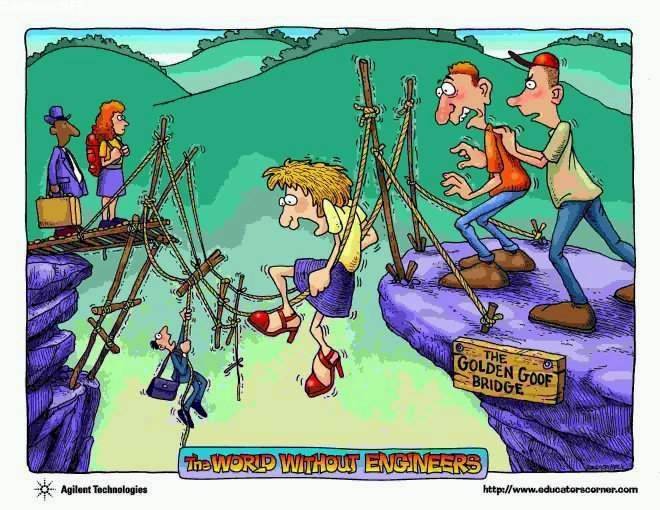
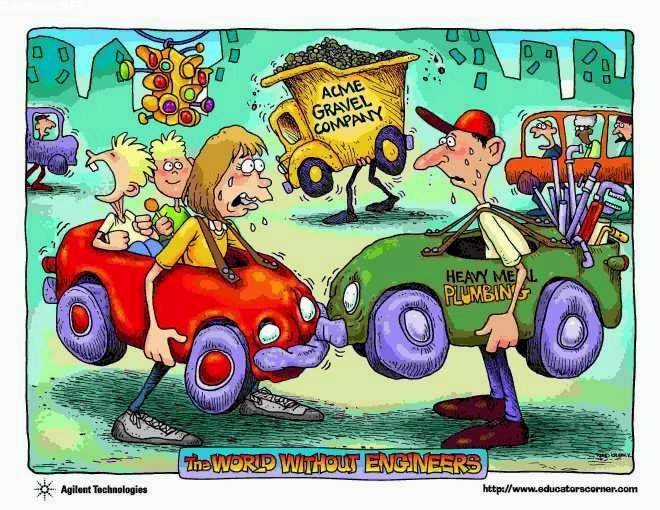
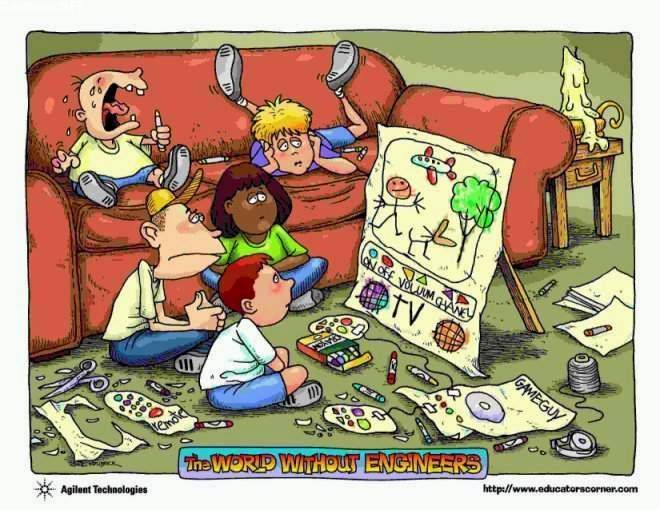
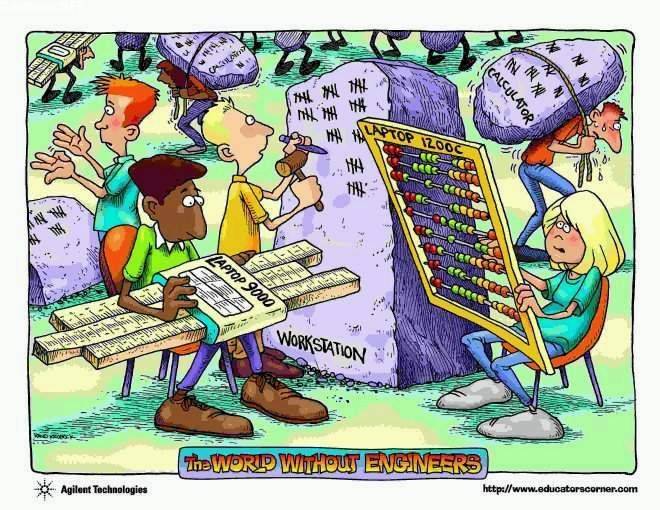
.jpeg)
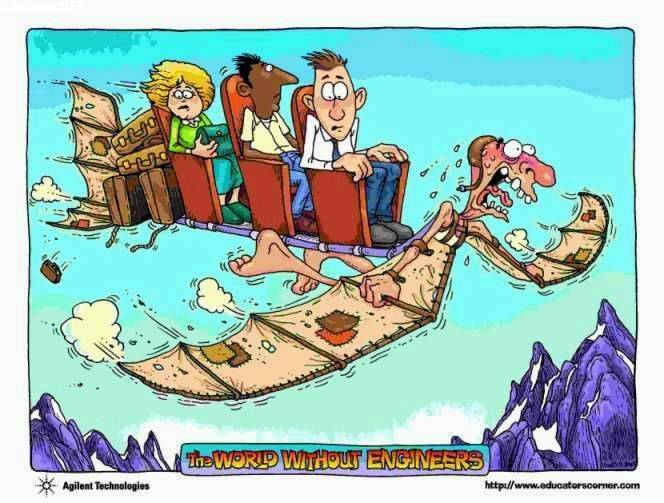
.jpeg)
.jpeg)
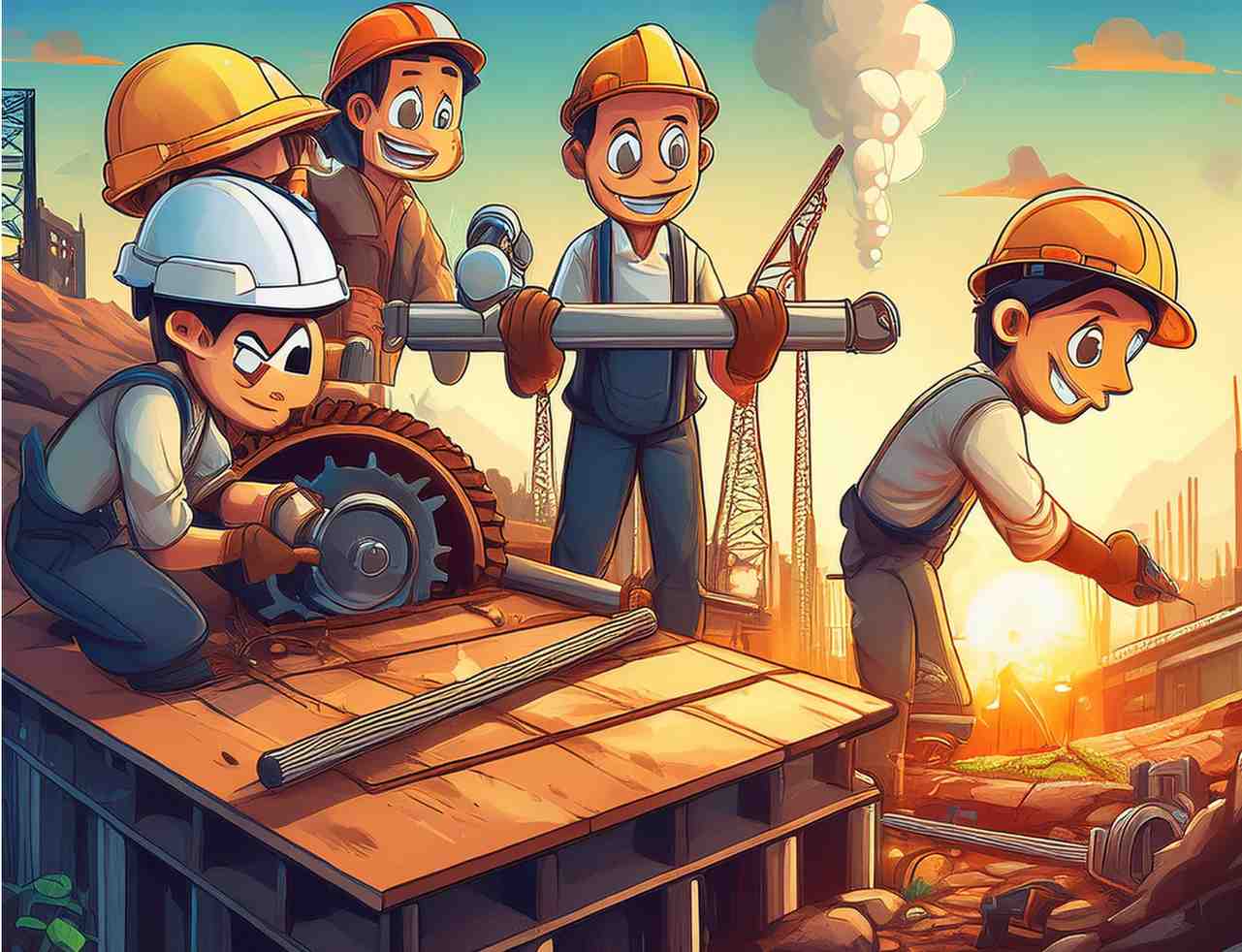
.jpeg)
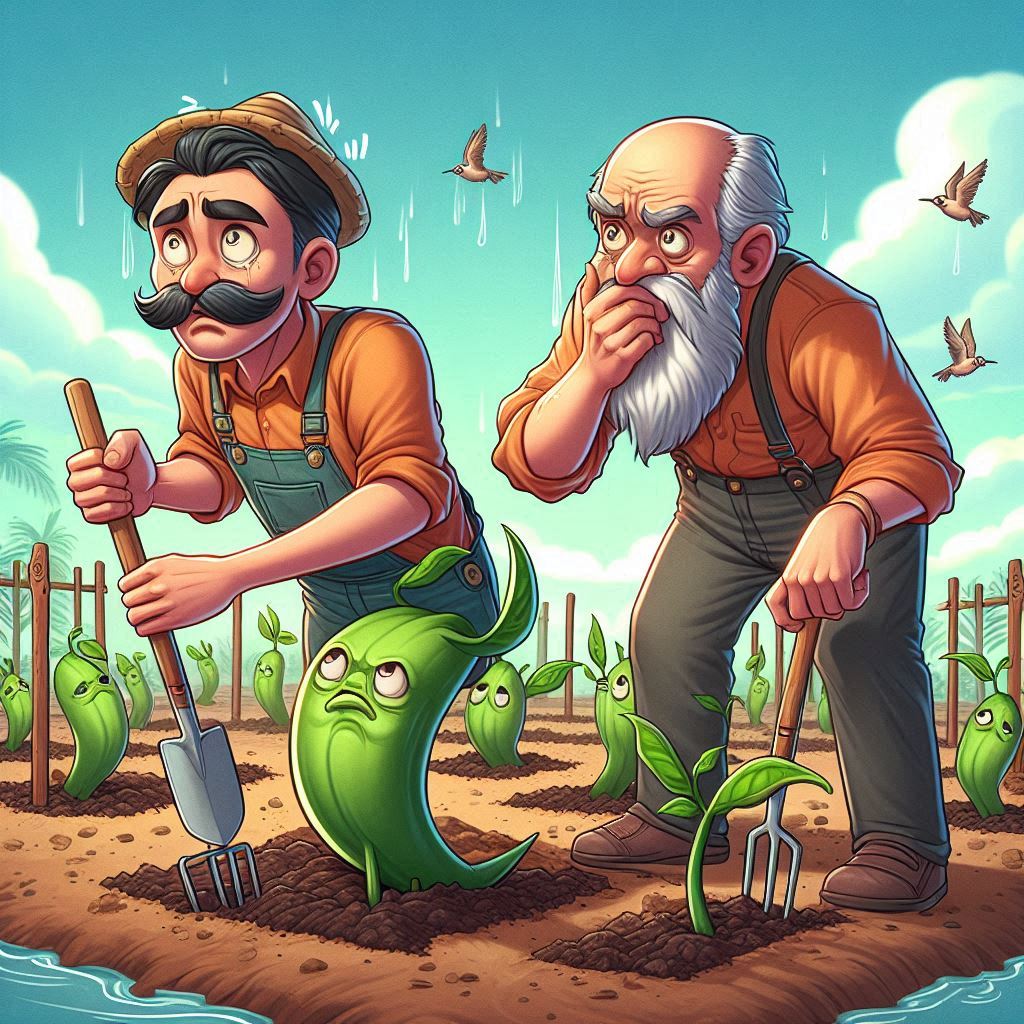
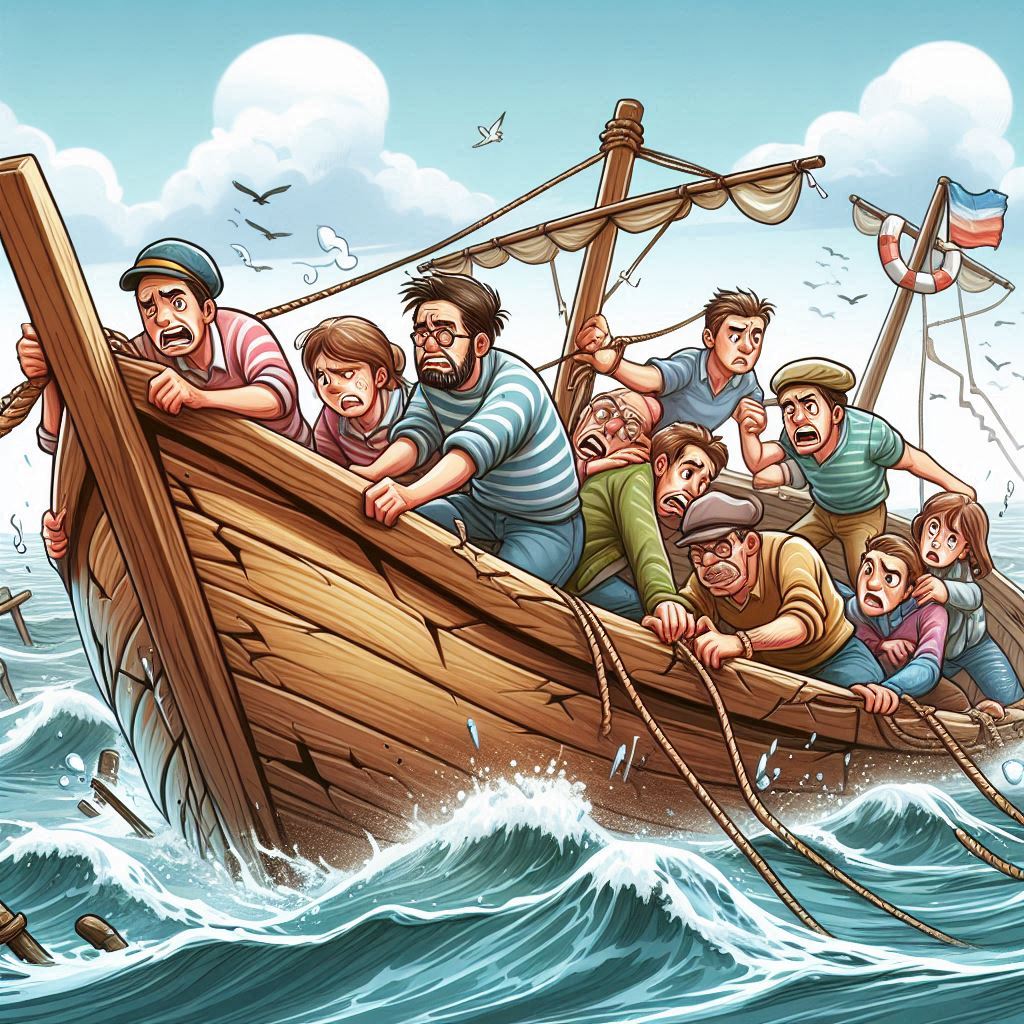
.jpeg)
